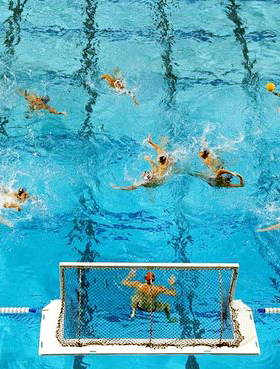It’s been said time and time again that UCLA is the home of champions. But what makes UCLA special is the actual home of those champions: the venues that house the teams (and those beautiful championship banners). Very soon, you’re going to be hearing a few names that you should familiarize yourself with, so consult this handy guide to the places where the Bruins get their home-field advantage and the stories behind how those fields got their names.
Pauley Pavilion
Non-traditional in its ambiance and true to old-school roots, Pauley Pavilion has served as the marquee arena on campus since June 1965. Home of the greatest college basketball dynasty ever (which has fallen on tough times as of late), Pauley opened after John Wooden won his first two NCAA titles, and still bears the name of Edwin W. Pauley, the lead donor to the building fund. Pauley, a businessman who ran oil companies, had no ties to UCLA apart from being a UC Regent at the time, yet matched $1 million worth of alumni donations.
The stadium also houses the Nell and John Wooden Court, which Wooden famously refused to have dedicated in his name unless his beloved wife’s name showed up first. Don’t get too comfortable, though. Pauley Pavilion is due for a major facelift. Take in the experience while you still can, though, since the renovated arena will surely lose the old-school feel to it.
Jackie Robinson Stadium
Home of UCLA baseball, the stadium opened in 1981 and was named after one of the greatest legends in all of sports. Jackie Robinson most famously broke the color barrier in MLB baseball, but before that, he honed his athletic skills in Westwood. The Jackie Robinson that UCLA students at the time knew was a star on both the football field and at the track, but ironically not on the diamond ““ Robinson hit only .097 in his one season playing baseball. The Bruins nowadays are hitting a lot higher than that at “The Jack,” just off Sepulveda Boulevard on the other side of the 405 Freeway.
Spieker Aquatics Center
The state-of-the-art aquatics center opened in 2009 amid much fanfare and signaled the start of a new era in UCLA aquatic sports. Now, men’s and women’s water polo and women’s swimming and diving can use just one facility. No one could have been more pleased than the diving team, which had to travel to Pasadena just to practice on a tower.
Eagerly awaited for more than five years, the aquatics center was made possible by a lead donation from Tod Spieker, a former swimmer on UCLA’s men’s swimming team (which actually doesn’t exist anymore ““ UCLA disbanded the team in 1994). But don’t confuse it with UC Berkeley’s Spieker Aquatic Complex, which was named after Tod’s brother, Ned.
Drake Stadium
Legends have passed through the ranks of UCLA track and field, such as Olympic gold medalists Jackie Joyner-Kersee, Florence Griffith-Joyner, and more recently, Dawn Harper. The stadium directly across from Pauley Pavilion is named after a legend in his own right. Elvin C. Drake, affectionately known as “Ducky,” competed for UCLA as a student-athlete and later came back to lead UCLA to the 1956 NCAA title as head coach. The stadium has also been the home field of soccer since a 1999 renovation.
Make sure to check out the other stadiums UCLA calls home, too. Catch the Farmers Classic at the Los Angeles Tennis Center this summer, or wait until the spring and head up to Easton Stadium to catch the UCLA softball team, the most recent national champions. And, of course, don’t miss out on a football game at the Rose Bowl.
Get familiar with the aforementioned names. You never know when you’re going to have to impress your friends.
